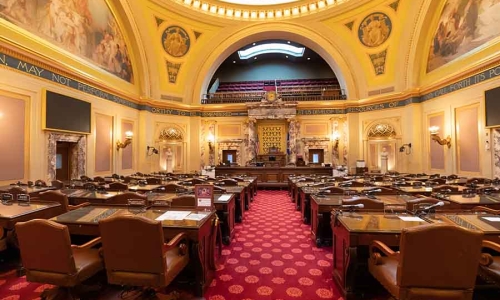Cannabis Industry enjoys a rare moment of Progress

Long-delayed step.
It’s not very often that Trump supporter and Republican Representative Matt Gaetz and Democratic Senate Majority Leader Chuck Schumer are on the same page. But that’s where we found ourselves last week after the Department of Health and Human Services recommended the Drug Enforcement Administration loosen restrictions on cannabis.
Gaetz, the right-wing GOP congressman from Florida, said the moment was “historic” and linked to his recent question-and-answer session with DEA Administrator Anne Milgram in which he pushed her for a timeline on a cannabis decision. At about the same time, New York’s Schumer called HHS’s move “the right thing” and pledged to work in Congress to pass “important marijuana legislation and criminal justice reform.”
The convergence of these two political opposites underscores just how untenable the federal prohibition on cannabis has become. States with populations totaling more than 160 million currently allow both recreational and medical access for adults, while many more states allow medical sales. The number of states where marijuana is illegal on the local level is steadily dwindling.
“It’s very clear that Americans are ready for this, and it’s time for our political leaders to catch up,” Boris Jordan, executive chairman of cannabis dispensary chain Curaleaf, said shortly after the news broke.
It’s becoming increasingly urgent for US policymakers: Illicit competitors have taken advantage of the gray area between federal and state rules to undercut licensed companies, which are also suffering from high taxes and scant access to financing.
“The regulated cannabis industry in the US is hurting due to lack of capital, uniquely burdensome taxes and nearly unfettered competition from unlicensed operators,” said Adam Goers, co-chair of the Coalition for Cannabis Scheduling Reform. “Moving down to Schedule III will provide a massive boost to our industry, particularly social equity and small business owners who have suffered the most under the status quo.”
It would also change how cannabis businesses are taxed, according to Kim Rivers, chief executive officer of Trulieve, a cannabis company with 186 US retail locations and 4 million square feet of cultivation and production facilities. She said that such a change would have saved the company $137 million last year, reducing its tax rate from 24% of gross profit to 4%.
It’s “a historic step forward,” Rivers said.
Zachary Kobrin, an attorney who specializes in cannabis at Akerman, agreed that moving cannabis to Schedule III would bolster companies’ results. He referred to the federal tax code known as section 280E, which prevents companies that sell an illegal substance from taking tax deductions, as “one of the most negatively impactful policies” on the industry.
“Cannabis companies currently have effective tax rates as high as 70% to 90%,” Kobrin said in an email. Rescheduling grants “massive tax savings and allows cannabis operators to run their business like every other business when it comes to tax planning and saving.” It would also likely open the industry up to capital markets and US stock exchanges, he added, while opening up access to FDA research grants that would make clinical studies of marijuana more accessible.
Kobrin said the DEA review process, which will be broader than the one carried out by HSS, could take six to twelve months — or longer.
Nonetheless, it indicates that President Joe Biden is looking to address the issue in time for elections, said Jon Purow, a partner at Greenspoon Marder who specializes in the cannabis industry.
“This is a half measure that looks good for political purposes and could be implemented in time for the presidential election next year,” he said. He predicted the DEA would likely agree with HHS’s decision as it is currently more focused on drugs seen as higher priority such as fentanyl and methamphetamines.
While the industry’s optimism was tempered with caution, there was a broad sense that the recommendation marked an important shift for the industry.
“This major step will help break down barriers for normalization, access, equity and research in the months and years to come,” Goers said.





